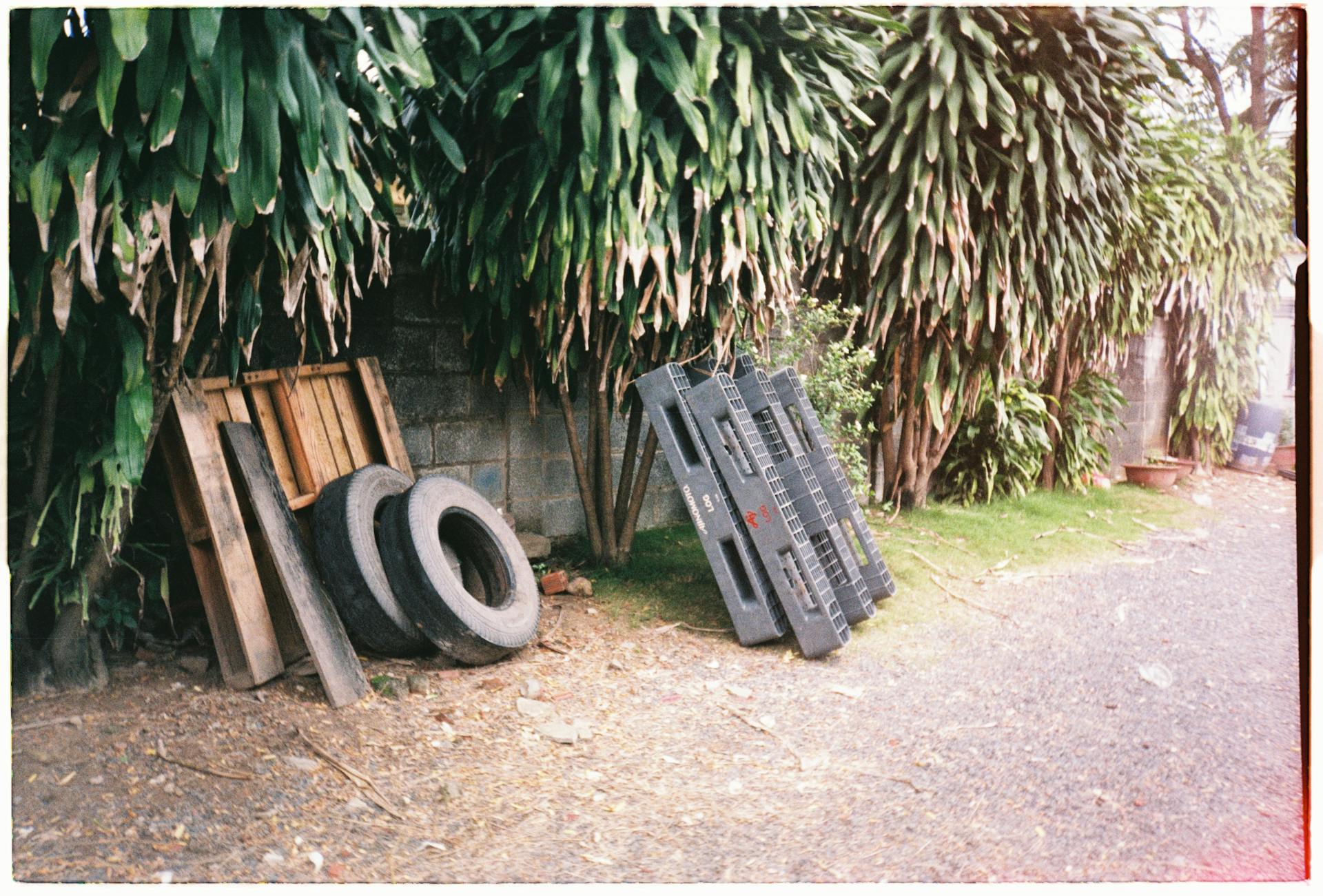
Using pallets for garden beds is a brilliant way to repurpose old materials and create a unique, eco-friendly space for your plants. Pallets are readily available at a low cost, with prices starting from $5 to $10.
Pallets can be easily disassembled and reused, making them a cost-effective solution for garden beds. This is especially true for those who are on a tight budget or want to minimize waste.
Pallets come in a variety of sizes, with some measuring 40 inches long and 48 inches wide. This makes them perfect for creating raised beds that can fit in small spaces.
Materials and Preparation
To start building your pallet garden bed, you'll need to gather the necessary materials. You'll need 3 to 4 pallets, depending on their size, to ensure they fit together properly.
You'll also need some basic tools like a hammer, vice grips, pry bar, drill, and staple gun. The staple gun should be loaded with 3/8 inch staples.
You'll also need screws in different lengths, such as 1 inch, 1 1/4 inch, and 1 3/4 inch. This will give you flexibility when assembling the bed.
Landscaping fabric is also a must-have to prevent weeds from growing up through the bed.
A miter saw or a skill saw will come in handy for making precise cuts, especially when creating the 90º and 45º cuts needed for the bed's frame.
Here's a list of the materials you'll need:
- 3-4 pallets
- Hammer
- Vice grips
- Pry bar/Crowbar
- Drill
- Staple Gun - 3/8 inch staples
- Screws; 1 inch, 1 1/4 inch, and 1 3/4 inch
- Landscaping Fabric
- Additional treated wood from a lumber store (if needed)
Before you start assembling the bed, make sure to disassemble the pallets and remove any old nails. This will give you clean, usable wood for your project.
Design and Planning
Before you start building your pallet garden bed, take some time to think about what you want to use it for. You'll want to consider how big it should be and what you want to grow in it.
Consider the space you have available, both for building and assembling the pallet garden bed, and for the bed itself. If you're building on a balcony, make sure you have enough space and that the balcony can bear the weight of the pallets, soil, and plants, which can reach up to one tonne.
You can use your pallet garden bed in a variety of locations, including the garden, balcony, or even a patio, as long as it's in a spot that gets enough sunlight for your plants.
Size
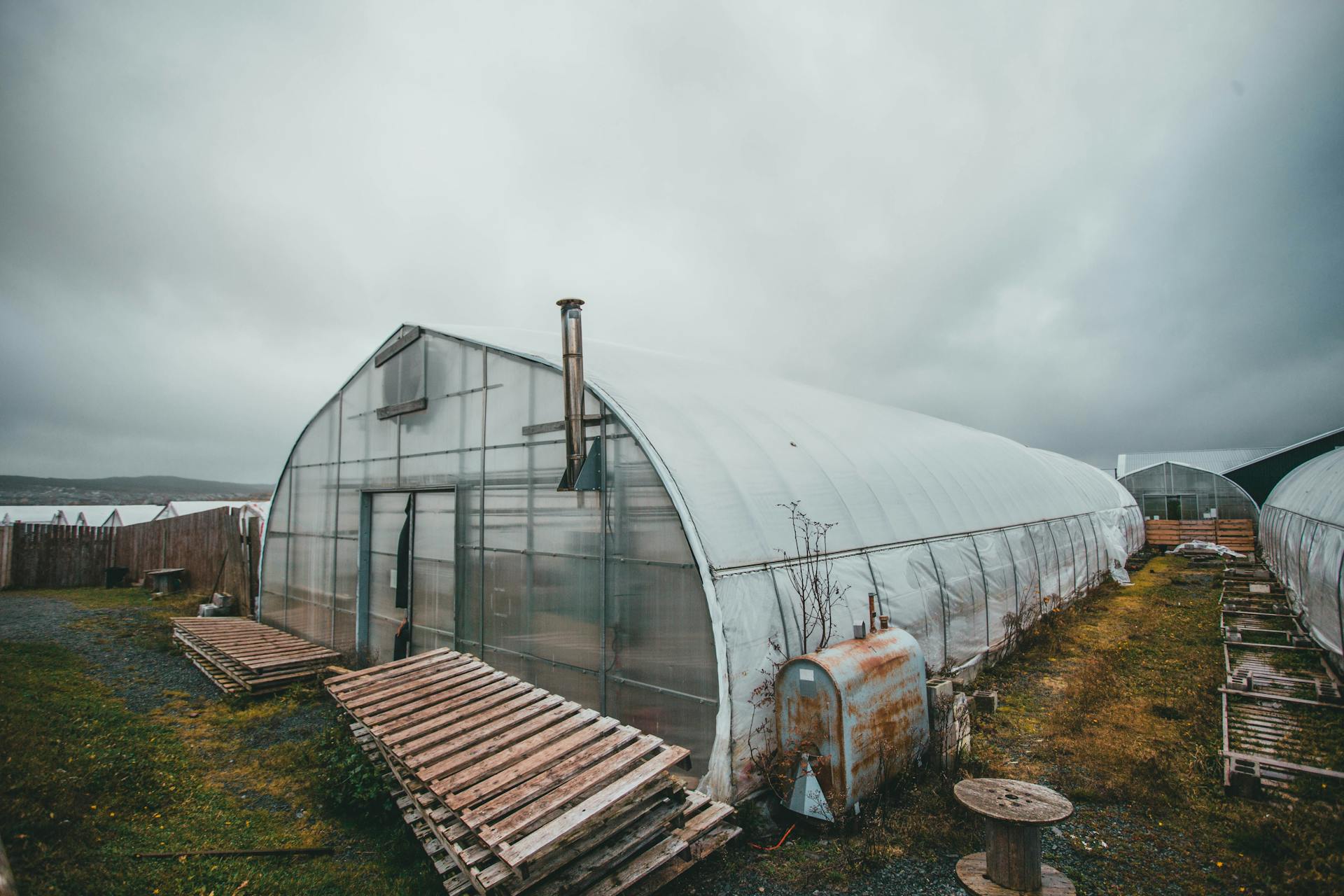
When working with pallets, the size of the pallet can vary, but a good starting point is to look for ones that measure around 27″ x 41″.
These larger pallets will give you more usable material for your project, like the ones in the photo below.
Each of the usable boards on these pallets measured 41″ x 5 1/4″, which is a great size for building a raised garden bed.
You'll likely need 12 of these boards per bed, depending on the design you choose.
The runner boards from underneath the pallet can also be repurposed to create support posts for your bed, which is a great way to anchor your boards and add stability.
Planning
Before you start building your raised pallet garden, take some time to plan it out. Think about what you want to use it for, how big it should be, and what you want to grow in it.
You'll want to consider the space where you plan to put your garden, whether it's on a balcony or in the ground. Make sure you have enough room for building and assembling it.
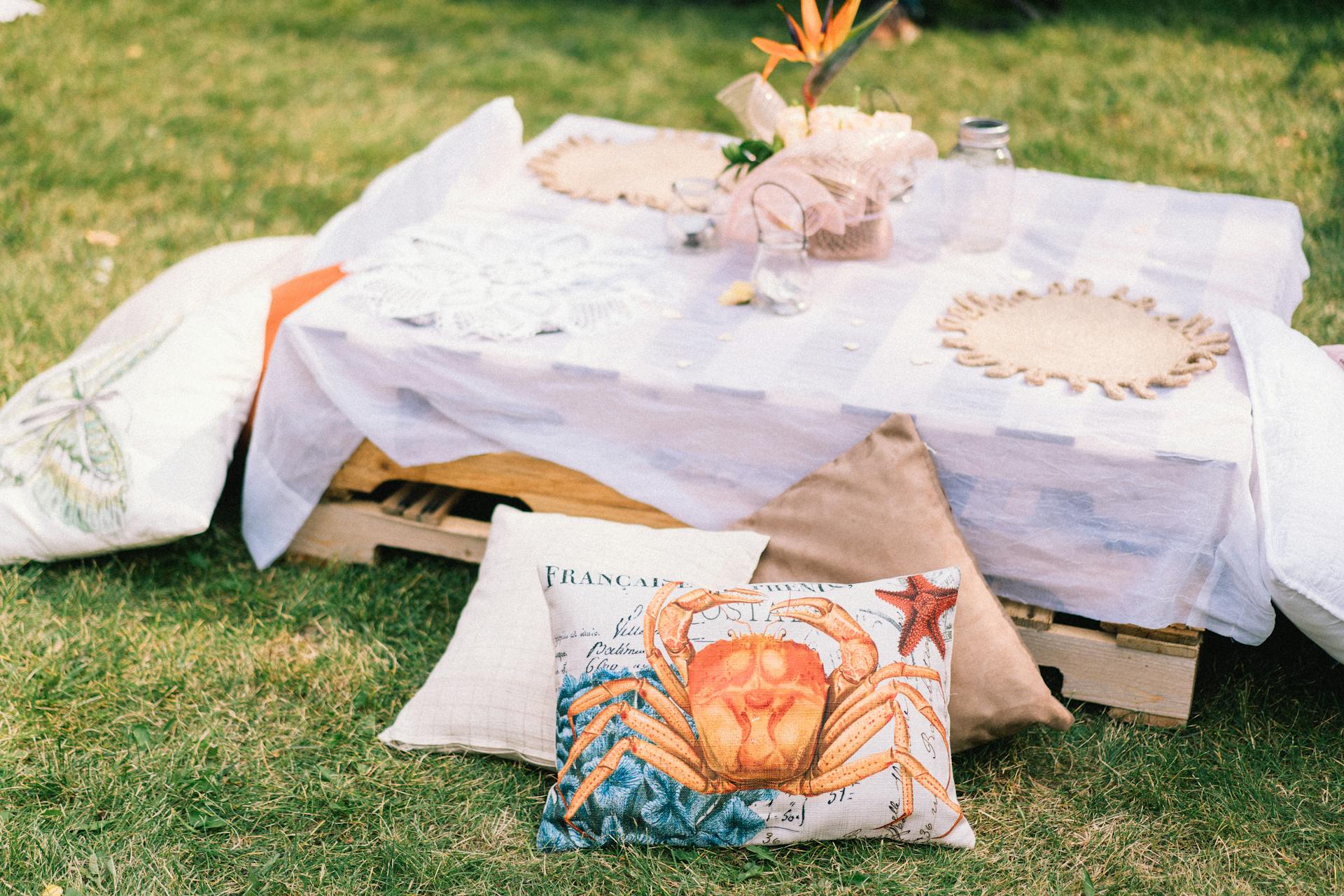
The weight of the pallets, soil, and plants can add up to a significant amount, so check if your balcony can bear the load. Up to one tonne is a good rule of thumb.
If you're building a raised flower bed or vegetable planter, the garden is a great place to put it. The water will simply seep into the soil, and you can easily add compost from your nearby compost area.
Galvanised wire mesh can be a useful addition to keep small rodents away from the roots.
Calculating Soil Quantity Needed
Calculating the amount of soil needed for your raised pallet garden bed is a straightforward process. To start, you'll need to calculate the internal dimensions of your bed.
A typical raised pallet garden bed usually has three layers, each about 20-30cm deep. You calculate the internal dimensions multiplied by the height of the layers to get the total volume of soil needed.
For a rectangular bed, multiply the length by the width by the height to get the volume. For example, if your bed is 1 meter long, 0.5 meters wide, and 0.25 meters high, the volume would be 1 x 0.5 x 0.25 = 0.125 cubic meters.
Remember to also consider the depth of the layers when calculating the volume. In this example, the three layers are 20-30cm deep, so you'll need to adjust the calculation accordingly.
Head
A raised garden bed made from four pallets can be a perfect square, fitting neatly in the corner of the garden. This design is a great example of creative reuse of materials.
The standard size for this type of raised bed is formed by four pallets, making it a compact and space-efficient option.
Optimizing Balcony Space
Optimizing Balcony Space is crucial for making the most of your outdoor area. Cut pallets in half to save space and create a unique design.
You can also build a smaller bed by using two pallets as walls and attaching a planting tray with soil in the middle. This is a great way to add some greenery to your balcony without taking up too much space.
Cutting pallets in half is a simple solution for small balconies, but you can also repurpose them as shelves or planters. This will help keep your balcony organized and make the most of the space you have.
Using two pallets as walls for a smaller bed is a great way to create a cozy reading nook or a spot for relaxation. Just attach a planting tray with soil in the middle and add some plants for a touch of greenery.
Building and Assembly
To build your raised garden bed, you'll need some essential tools. A circular saw or Miter saw is necessary for cutting the pallets, while a drill and screw driver bit will help you attach everything together. If you want to drill pilot holes for your screws, you'll also need a drill bit.
You'll need the following materials to get started: Circular saw or Miter sawDrillScrew driver bitDrill bit (optional)Deck ScrewsPallets (3 pallets per bed)
To assemble your garden bed, start by attaching the pallet pieces to the remaining two pallet halves using 2″ wood screws. Deck screws are a good choice, as they can withstand unpredictable weather.
Box
Building a box with pallets can be a fun and creative project. You can use pallets to create a raised garden bed or a planter box.
Standard wooden pallets are typically 48″ long and 40″ wide, but you may find some that vary in size based on what they are used for. If your pallets are similar in size, measure to the middle of the pallet (typically 24″) to determine where to cut.
To cut the pallets, use a circular saw set at its deepest setting. This will make it easier to cut through the slats on top of the pallet. You may have to turn the pallet over and cut through the bottom as well.
If your pallets are not equal in size, measure halfway on your smallest pallet and cut it in half. Next, cut your larger pallet into two equal portions that match the cut pieces of the smaller pallet.
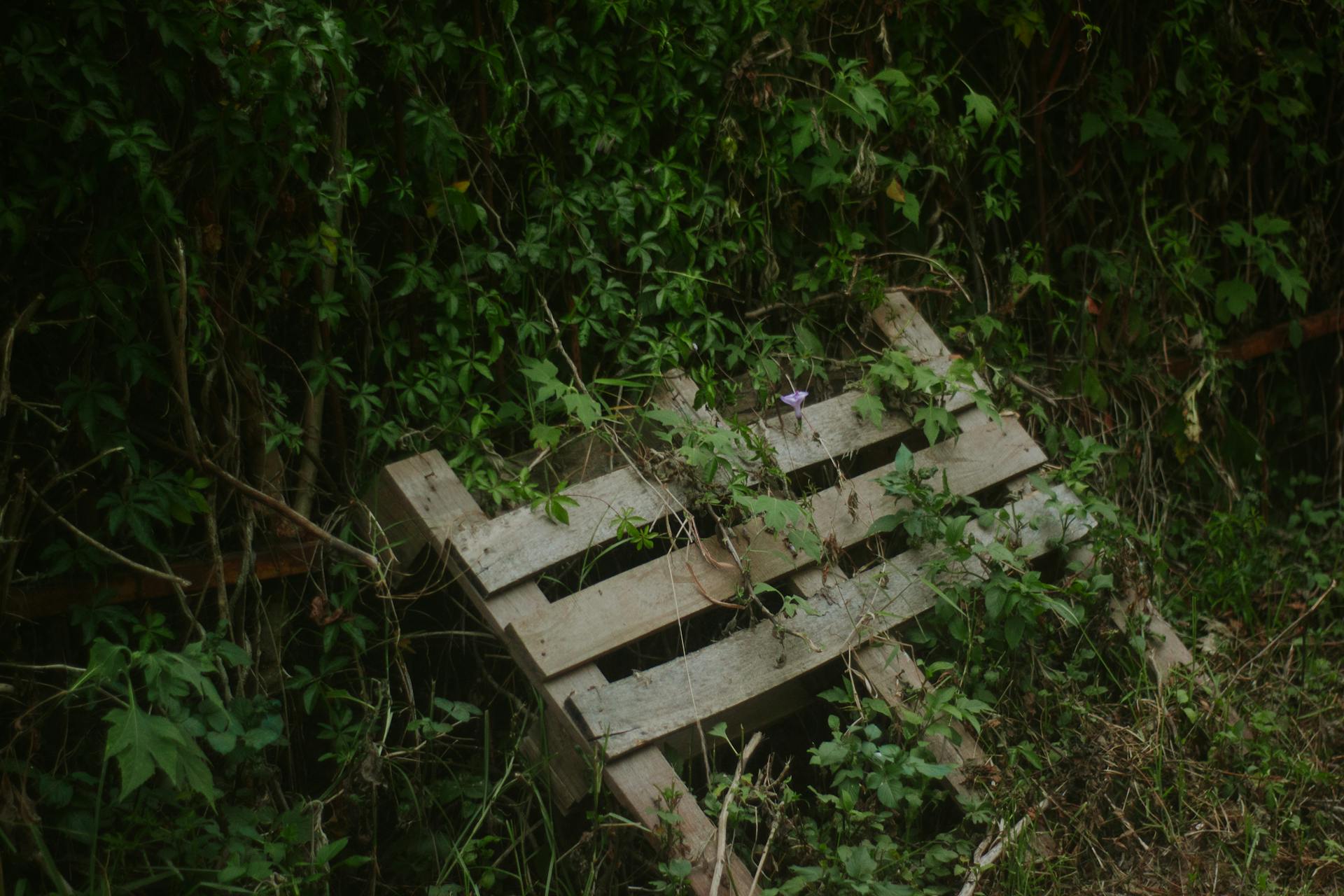
Here are some general guidelines for building a planter box with pallets:
To assemble the box, place the pallets at a 90-degree angle and screw them together with wood screws. You can also use paving stones at the corners if you don't want the pallets to rest directly on the levelled surface.
Assemble Components
To assemble the components of your raised garden bed, you'll need a drill and a screwdriver bit. You'll also want to have your pallets ready, with three pallets needed per bed.
Use deck screws to attach the pallet pieces together, as they're better able to withstand unpredictable weather. Simply attach the pallet pieces to the remaining two pallet halves using 2" wood screws.
If you're building a larger garden area, you can use six pallets to create a rectangular planter box. Position two pallets on the long sides and close them with one pallet at either end.
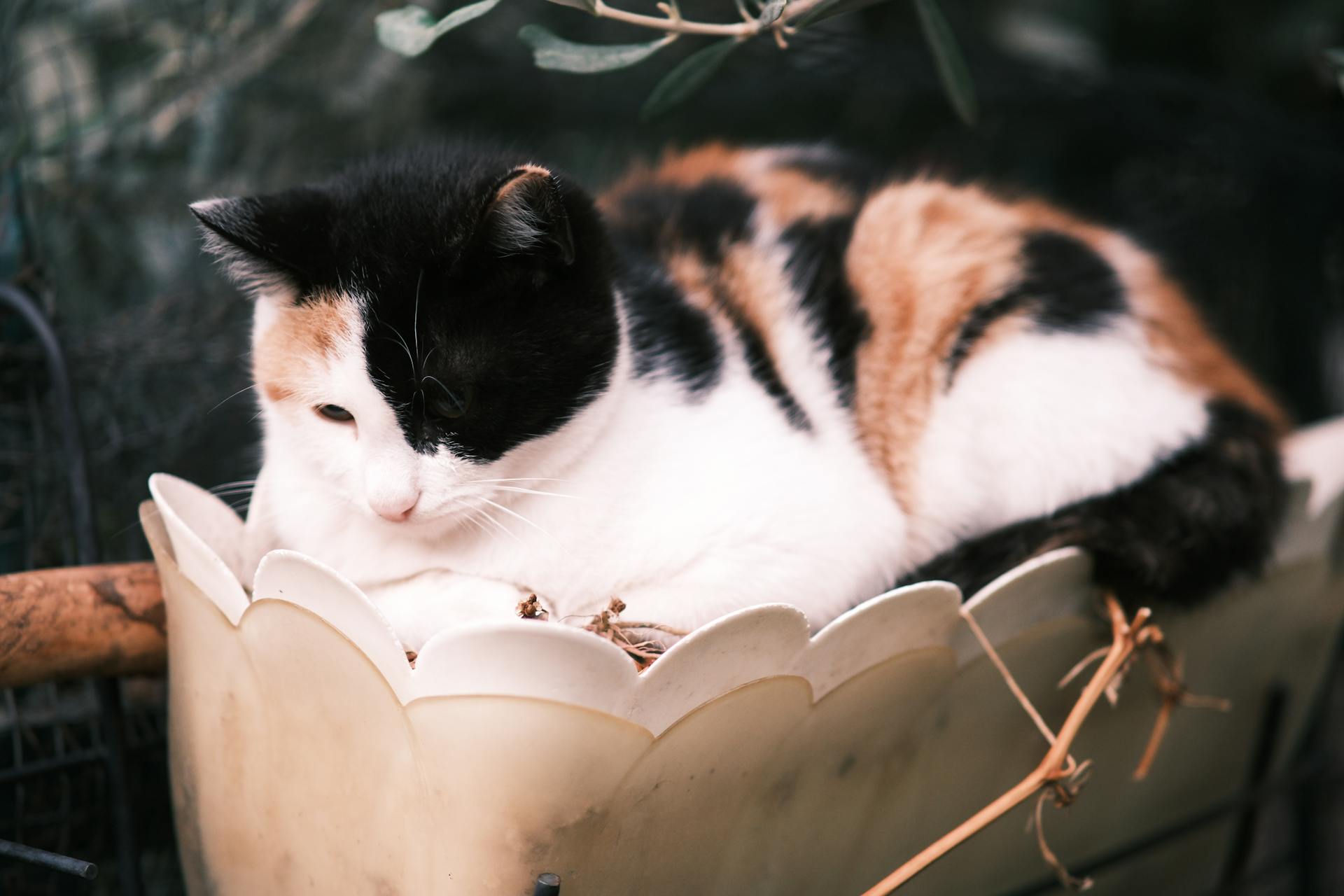
Here's a quick rundown of the tools you'll need to assemble your raised garden bed:
- Circular saw or Miter saw
- Drill
- Screw driver bit
- Drill bit (optional)
- Deck Screws
- Pallets (3 pallets per bed)
Remember to level the surface of the ground before assembling your raised garden bed, and use a spirit level to ensure it's perfectly level.
Design and Features
Pallets for garden beds offer a sustainable and cost-effective way to create raised beds, with the added benefit of repurposing discarded materials.
Made from wood, pallets are naturally rot-resistant and can last for many years with proper care.
Pallets come in various sizes, making it easy to find one that fits your garden bed design.
Vegetable Planter
To create a vegetable planter, you'll need to start with a solid foundation. Use 4-6 Euro pallets to build the base of your planter.
Using additional pallets can help you divide your planter into separate sections. For example, adding a pallet in the middle can allow you to grow vegetables on one side and herbs or flowers on the other.
To ensure your planter is level, you'll need a spirit level. This will help you achieve a stable and even surface for your plants.
You'll also want to protect your pallets from the elements. Using a wood protector is a great way to keep your planter looking its best for years to come.
Here's a list of materials you'll need to get started:
- Euro pallets (4–6)
- bubble wrap
- galvanised wire mesh
- boards for panelling
- corner angle/bracket
Roof for the Box
If your raised pallet garden is exposed to strong sun, it makes sense to include a roof to protect your plants.
You can add a fixed roof to help shield your vegetables from harsh sunlight.
A roll-up roof is a good option if you want to be able to access your plants easily.
Including a roof can also help prevent damage from heavy rain, which is especially important if your garden is exposed to strong winds.
A fixed roof will provide more protection than a roll-up roof, but it may be more difficult to install and maintain.
Exterior Design Options
You can leave the bottom of the pallet facing outwards for an easy design option. This way makes it easier to attach the film on the inside of the raised pallet garden bed.
Leaving the bottom of the pallet outwards also allows insects to live in the gaps on the outside, which can be a great bonus.
By flipping the pallets over, you can achieve a smooth outside finish. Alternatively, you can attach boards from another pallet for a similar effect.
How to Use an Additional Insect Hotel
Using an additional insect hotel is a great way to provide more space for beneficial insects to nest and pollinate your garden.
Several pallets stacked on top of each other can make an ideal insect hotel.
Simply fill the spaces between the pallets with materials like straw, empty clay pots, or other objects where insects can build their nests.
With a bit of luck, wild bees will nest here and pollinate the flowers of your strawberry bushes.
Benefits of
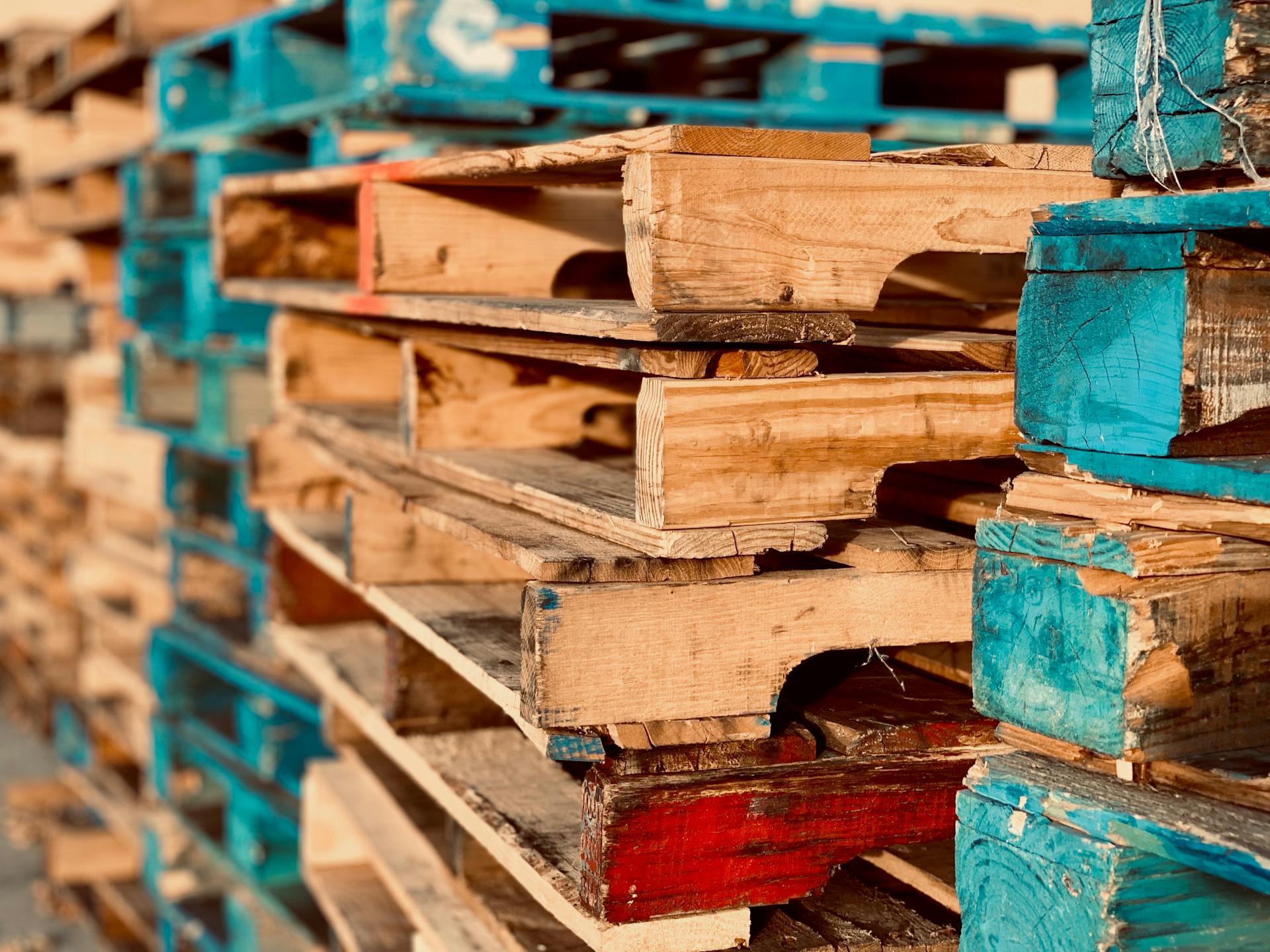
Having a raised bed in your garden can make a big difference in terms of soil health. By elevating the soil, you get better control over the health of the soil.
Raised beds also have the advantage of reducing weed growth. This is because weeds have a harder time germinating and growing in raised beds.
Another benefit of raised beds is that they can protect burrowing critters like rabbits and moles. These critters often damage plants, but with a raised bed, they have a harder time getting to the roots.
Raised beds are also a no-till zone, which is healthier for the soil. You don't need to till the soil, which can damage its structure and lead to erosion.
Working in a raised bed can be easier on your back, especially if you have mobility issues or are just starting out with gardening.
Suitable Plants for Growth
You can grow a wide variety of plants in a raised pallet garden bed, as long as they don't have very deep roots. This means you can plant many types of tasty vegetables, fruits, and herbs that will thrive in your raised pallet garden box.
Some of the most suitable varieties of fruits and vegetables for your raised pallet planter box include lamb's lettuce, iceberg lettuce, and other types of lettuce such as butterhead lettuce.
Garlic and onions, including spring onions, are also great options for a raised pallet garden bed. Carrots, beetroot, and nasturtiums will also do well in this type of garden.
If you're looking to add some extra flavor to your garden, consider planting herbs like basil, thyme, and oregano. Strawberries, gooseberries, raspberries, and rhubarb are also great options for a raised pallet garden bed.
Here are some of the suitable plants for growth in a raised pallet garden bed:
- lamb's lettuce
- iceberg lettuce
- butterhead lettuce
- garlic
- onions and spring onions
- carrots
- beetroot
- nasturtiums
- strawberries
- gooseberries
- raspberries
- rhubarb
Installation and Maintenance
To install pallets for garden beds, you'll want to choose a level spot with good drainage. This will help prevent waterlogged soil and root rot.
Make sure the pallets are securely placed on the ground, using screws or nails to attach them to each other if necessary. This will prevent them from shifting or toppling over.
Regularly inspect your pallet garden for signs of wear and tear, such as loose boards or rotting wood. This will help you catch any problems before they become major issues.
Installing Layers
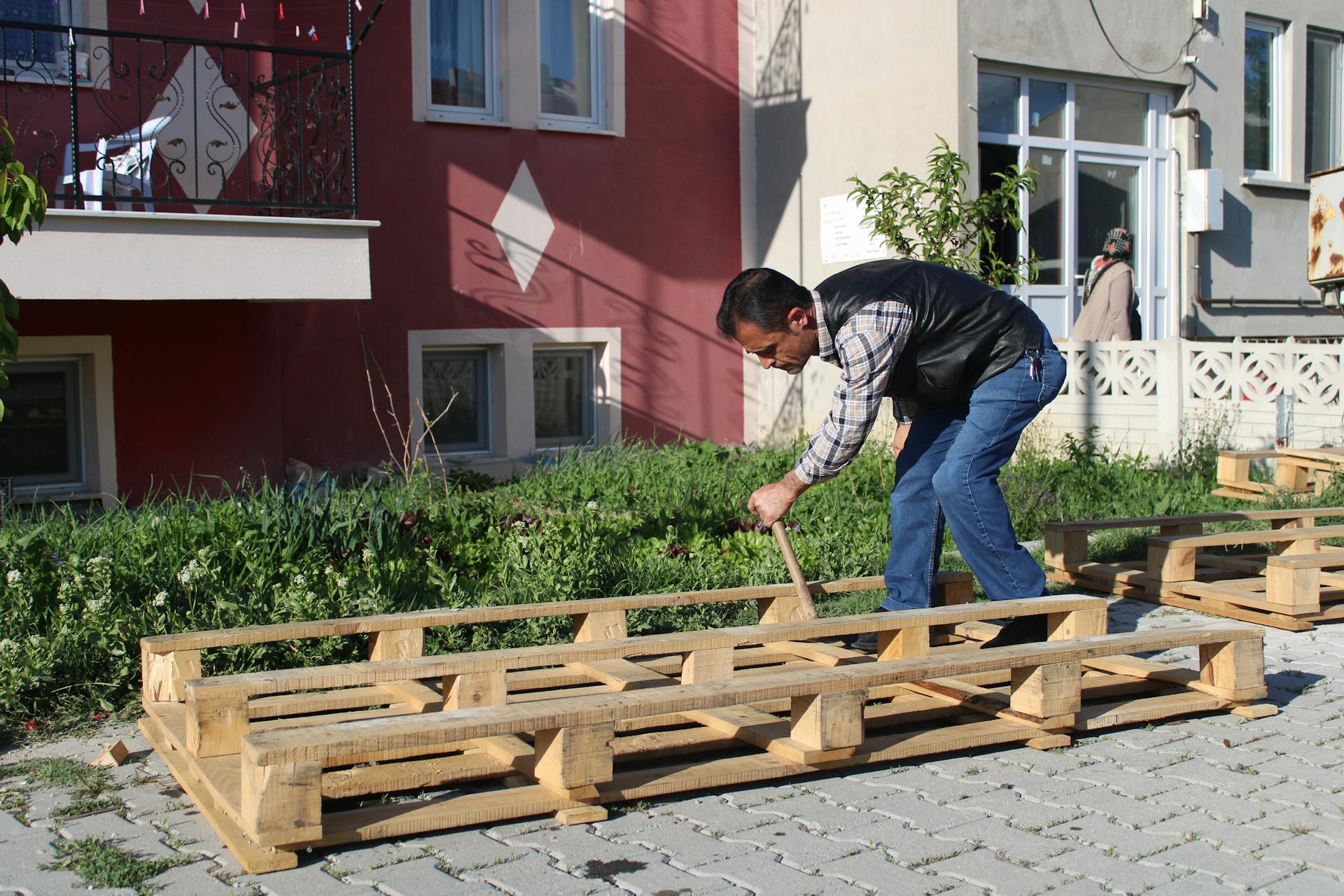
Installing layers in a raised pallet garden is crucial for a healthy and thriving garden. Use basic soil for the bottom layer to ensure good aeration.
For the middle layer, compost is the way to go. This will help retain moisture and suppress weeds.
The top layer should be good-quality garden soil, which will provide a nutrient-rich base for your plants to grow.
By following this simple layering system, you'll be well on your way to creating a beautiful and productive raised pallet garden.
Installing on a Slope
To build a raised bed of pallets on a slope, you have to level the planter and secure it. You can do this by adding more pallets on one side or filling in the soil to face straight towards the horizon.
If you're installing on a slope, it's essential to level the planter to prevent the soil from washing away or the pallets from toppling over.
Practical Accessories
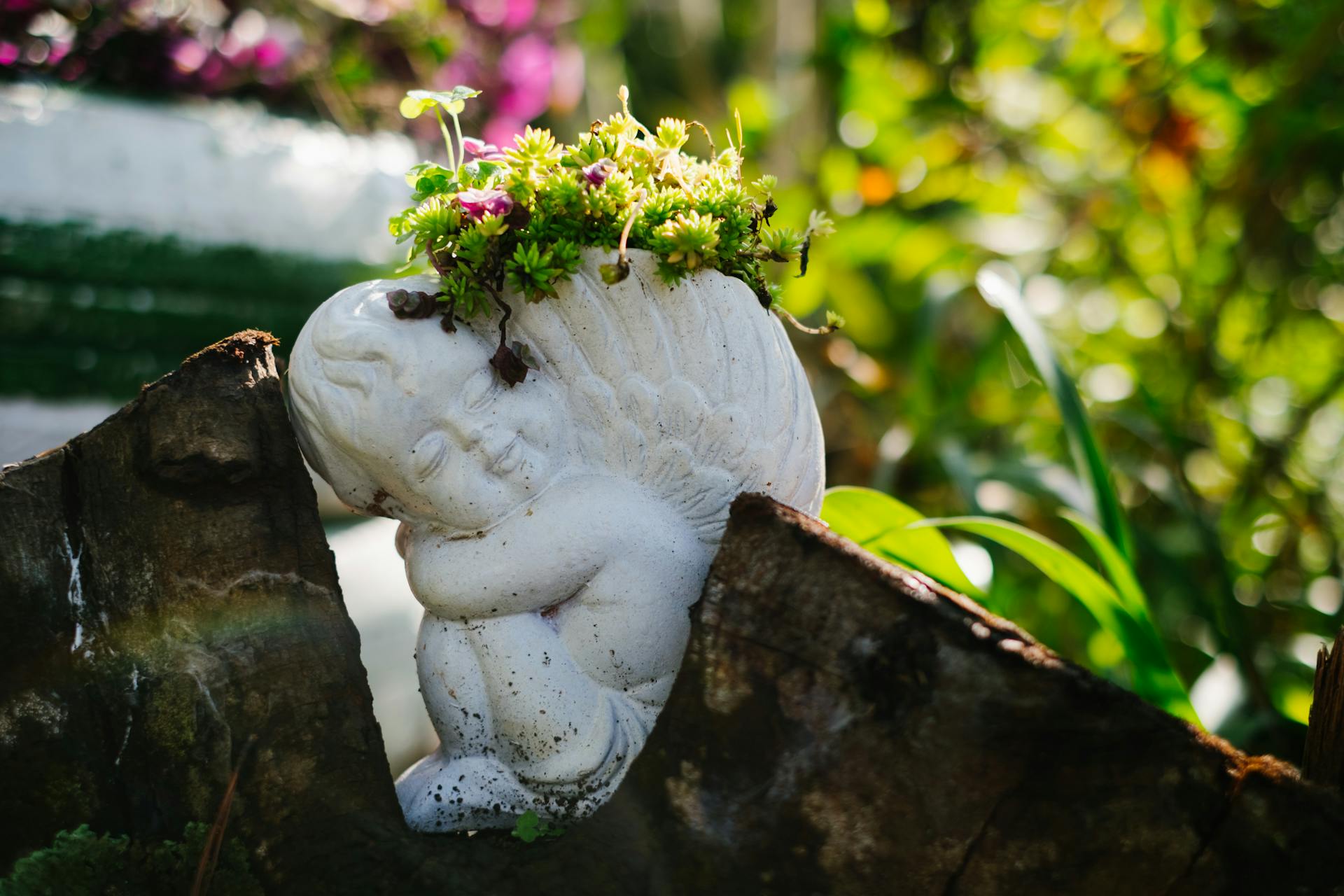
Raised garden beds made from pallets can be equipped with castors to make them mobile and easy to move around.
Make sure to adjust the castors to the weight of your raised pallet bed to ensure stability.
You can use stacking corners to add height to your raised pallet garden bed and protect the wooden blocks on the outside.
Planter boxes are a great way to separate different varieties of plants and can be used both inside and outside the pallet bed.
Tips and Variations
You can build a small raised pallet flower bed with just three pallets, where one pallet is placed on top of the other two, creating a table-like design. This is perfect for displaying your favorite flower decorations.
The size of your raised pallet garden bed depends on the space you have in your garden. Consider how much space you have available before deciding on the number of pallets to use.
A small raised pallet flower bed is a great option for a compact garden. You can place a wooden tub, a tray, or several potted plants on top of the pallets for a beautiful display.
Considerations and Costs
When planning your pallet garden, consider the initial investment, which can range from $0 to $100, depending on the materials you source.
You can find pallets for free or low-cost through local classifieds, Craigslist, or Freecycle, which can help reduce the upfront cost.
A pallet can be a great alternative to traditional garden beds, but it may require some additional materials, such as wood screws, nails, or a drill, which can add to the overall cost.
The cost of pallets can vary depending on their size, material, and condition, but a standard pallet usually costs between $5 and $15.
Estimated Project Costs
The cost of materials is a significant consideration for any project.
You can expect to pay around £40 to £85 for 4 Euro pallets. This price range is a good starting point for budgeting.
Galvanised wire mesh is another essential material, with a 3-metre roll costing approximately £5.
Film is also a necessary expense, with each roll costing around £25.
You'll also need wire and nails, which can be purchased for around £4.
What About Durability?
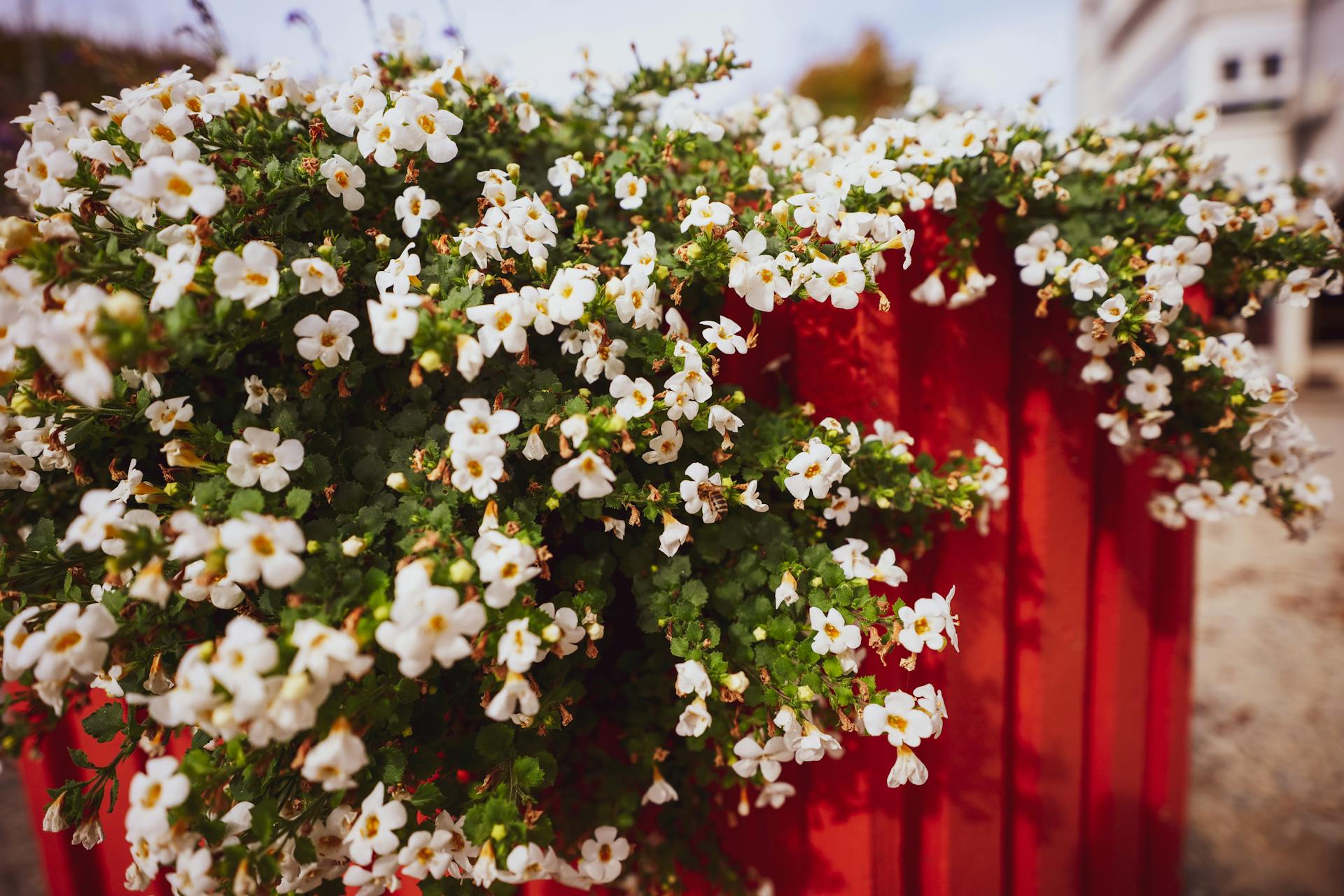
Durability is a top concern when it comes to pallet garden beds. Using pallets that have been pre-treated with a wood stain can help keep water damage and mould at bay.
Pallets that have been pre-treated with a wood stain can make the pallet garden bed more durable. This is a simple step that can make a big difference in the longevity of your garden bed.
Water damage and mould can quickly ruin a pallet garden bed. Pre-treated pallets can help prevent this from happening, making them a worthwhile investment.
If you're planning to use pallets for a garden bed, consider the cost of pre-treating them with a wood stain. It's a small price to pay for a more durable garden bed that will last for years to come.
Final Touches and Usage
Now that you've built your pallet garden beds, it's time to add the final touches to make them truly special.
The pallets you've chosen can be stained or painted to match your garden's style and theme, as we discussed earlier.
Add a layer of mulch to retain moisture and suppress weeds, which will help keep your garden looking its best.
You can also add a trellis or other support system to help your plants grow upwards, as seen in our example of a pallet garden bed with a built-in trellis.
Place your plants in the pallet garden bed, making sure to leave enough space for growth and air circulation, just like we did with the tomato plants in our example.
Water your plants regularly, but avoid overwatering, which can lead to root rot and other problems, as we discussed in our section on planning your pallet garden bed.
With a little creativity and some TLC, your pallet garden beds will be a beautiful and thriving addition to your outdoor space.
Frequently Asked Questions
Where can I get pallets for free?
You can often find free pallets at hardware stores, construction sites, and equipment stores, as well as from local businesses and individuals who may be giving them away for free. Check with these places directly to see if they have any available.
How many pallets to make a raised garden bed?
To make a raised garden bed, you'll need 2 pallets, which you'll cut in half longways to create the sides. This simple setup forms a perfect square bed for your plants.
How do you know if a pallet is safe for gardening?
Check for an 'HT' mark on the pallet's side to ensure it's been heat-treated and safe for gardening use
What to line a pallet planter with?
For pallet planters, line with heavy-duty plastic or pot liner rolls, depending on the type of wood (hardwood or softwood) to protect it from moisture. This simple step helps extend the life of your planter.
How long do pallet gardens last?
Pallet gardens can last up to 3 years with proper sealing and maintenance. With regular upkeep, they can provide a long-lasting and sustainable gardening solution.
Sources
- https://www.blackanddecker.com/blogs/blog/diy-pallet-raised-garden-bed
- https://www.instructables.com/Raised-Planter-Bed-from-Pallets/
- https://www.jeanelleblog.com/raised-garden-bed-from-pallets/
- https://backtohomemade.com/easy-pallet-raised-garden-bed/
- https://www.bosch-diy.com/gb/en/all-about-diy/raised-garden-bed-from-pallets
Featured Images: pexels.com
